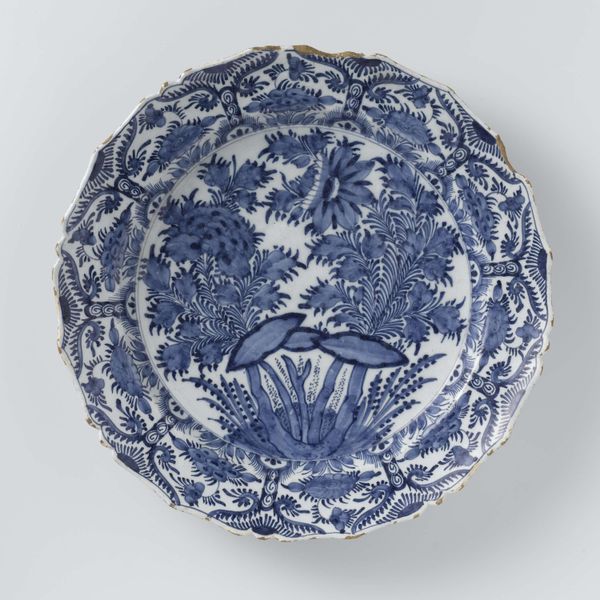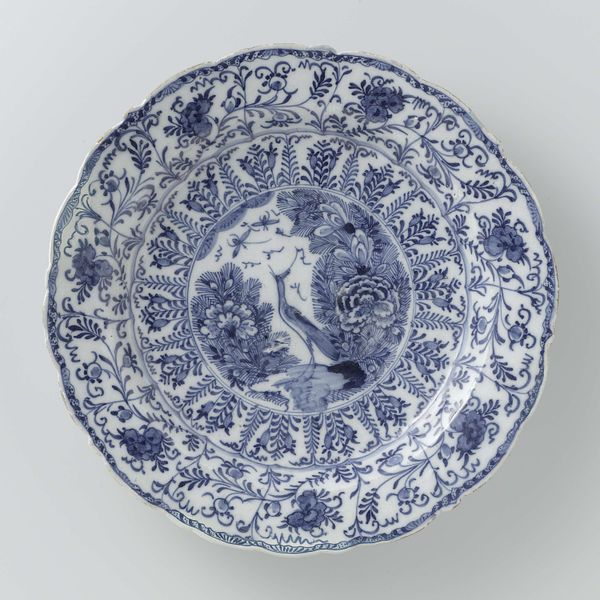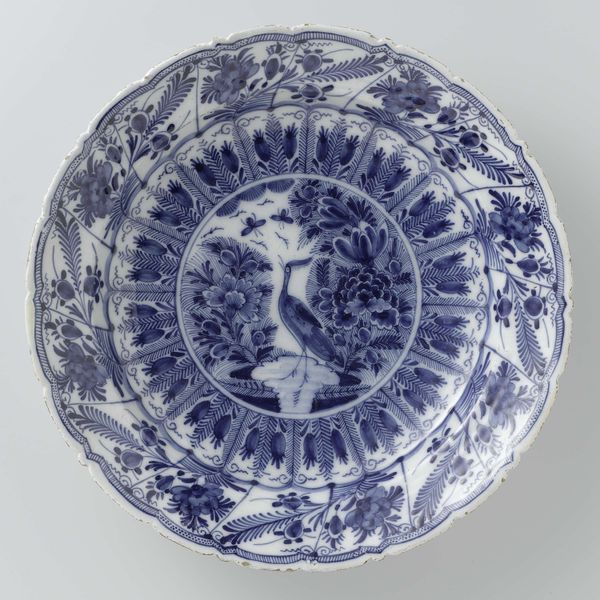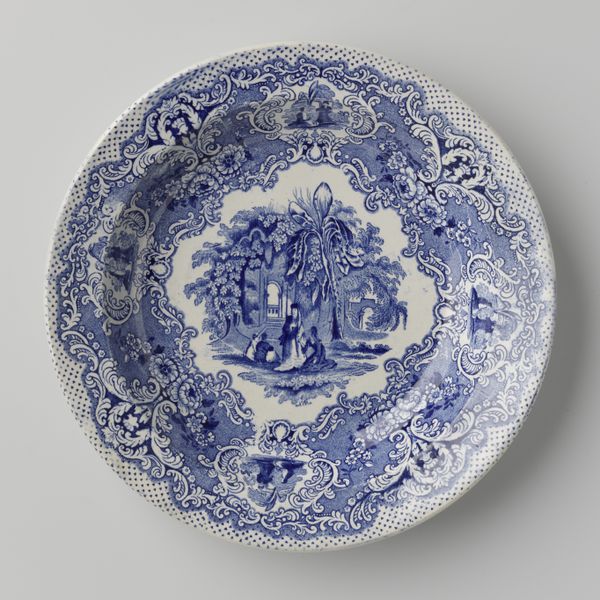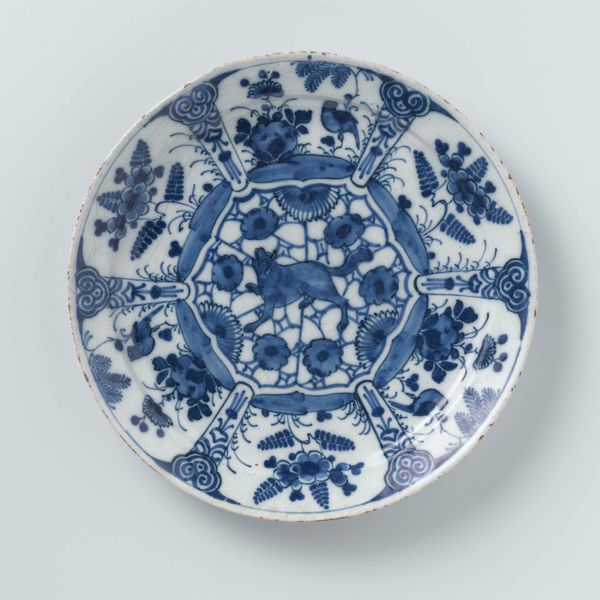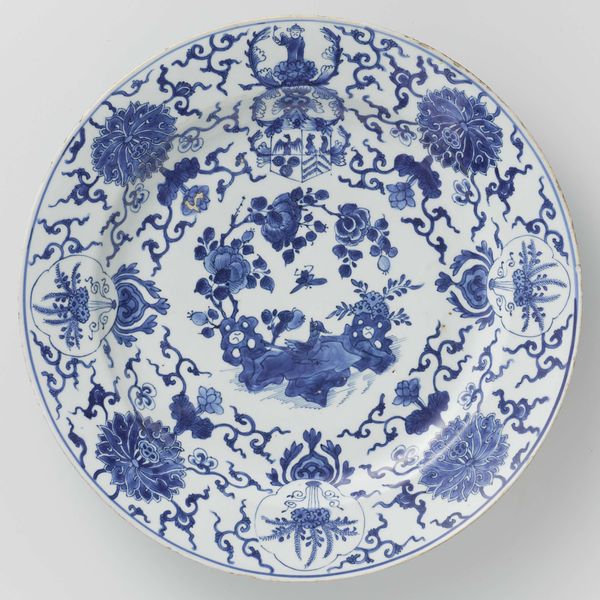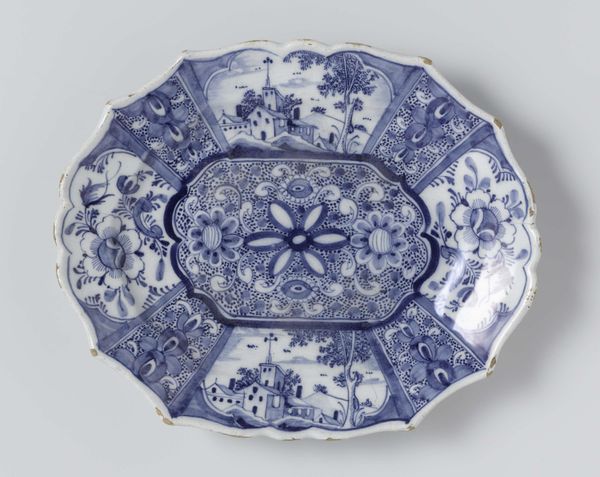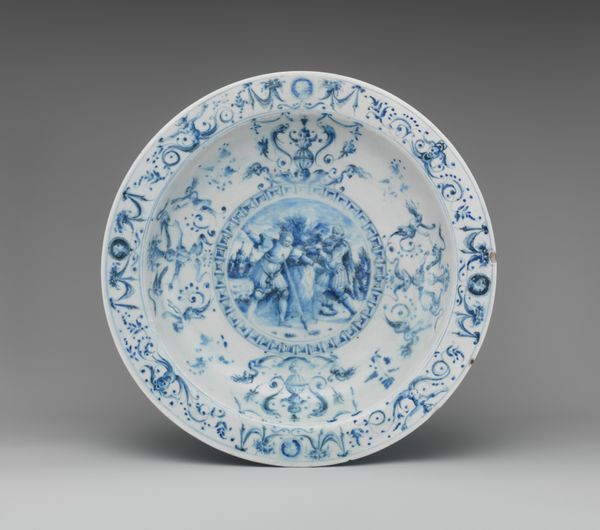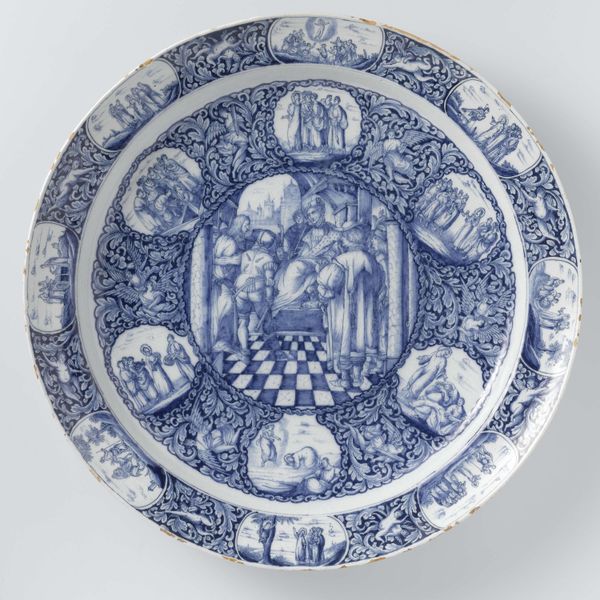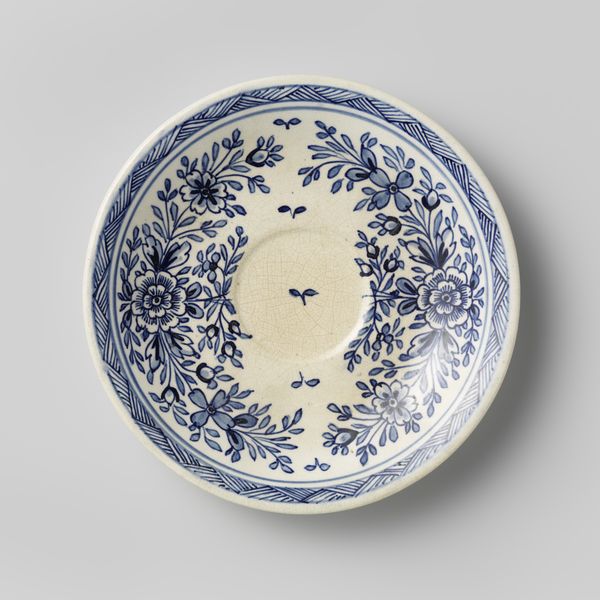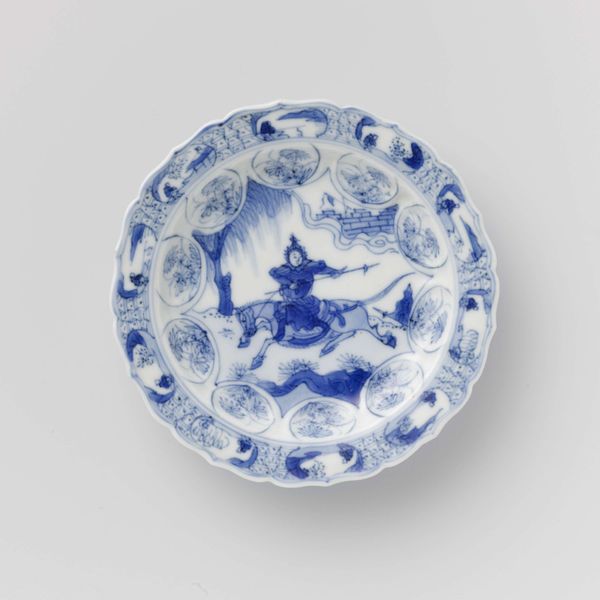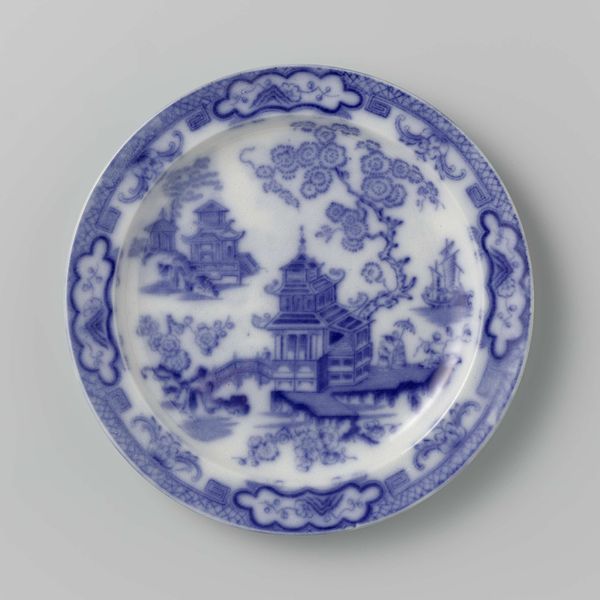
ceramic, earthenware
#
dutch-golden-age
#
ceramic
#
earthenware
#
stoneware
#
ceramic
#
decorative-art
Copyright: Rijks Museum: Open Domain
Editor: Here we have a Dutch Golden Age faience plate from around 1760-1790, made from earthenware. It’s lovely, but I'm not sure I understand what it represents. The flowers seem very stylized. What do you see in this piece? Curator: Beyond the aesthetic beauty, it’s the cultural memory embedded within the decoration that I find compelling. The Delftware style, with its blue-and-white palette, evokes the historical trade routes and the Dutch fascination with Chinese porcelain. Consider, for example, the central floral motif. Editor: It seems a bit chaotic, actually. Curator: Yes, but look closer. The seemingly random arrangement has an underlying symbolic order. It represents abundance and prosperity, ideals cherished during that era. Those aren’t just any flowers; they’re symbolic representations, passed down through generations of artisans. Does the specific type of flower not trigger certain associations to you? Editor: Not immediately, no, though the repetition gives it a sense of importance. Curator: Exactly! And that stylized aesthetic speaks to a visual language understood by contemporaries. A cultural shorthand, if you will. This seemingly simple dish then becomes a repository of history, trade, and shared cultural values. Editor: So it's not *just* decorative…it carries encoded meaning. Curator: Precisely! Each stroke of blue holds the echoes of historical exchange, aesthetic ideals, and social aspirations. We just need to learn how to listen. Editor: I’ll never look at Delftware the same way again. There's so much more than just pretty blue patterns!
Comments
No comments
Be the first to comment and join the conversation on the ultimate creative platform.
